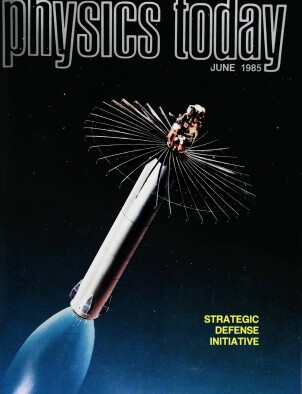Math Anxiety and Physics: Some Thoughts on Learning ‘Difficult’ Subjects
DOI: 10.1063/1.880979
For some time now, teachers of physics concerned about the growing gap between the Two Cultures have been, so to speak, stalking the wild humanist. They have set up courses in “physics for poets,” recruited nonscience students into seminars to “ready” them for science, and offered physics without the laboratory or calculus. Yet, despite these and other efforts to attract them, liberal‐arts majors continue to find ways to avoid physics, even when fulfilling minimum science requirements.
This article is only available in PDF format
References
1. L. W. Sells, The Science Teacher, February 1978, p. 28.
2. S. Tobias, Overcoming Math Anxiety, Norton, New York (1978);
Houghton Mifflin, Boston (1980).3. Math Anxiety, Math Avoidance, Reentry Mathematics, a four‐volume directory, description and evaluation of math anxiety programs, available from The Fund for Education and Human Services, 1802 T St. N.W., Washington, D.C. 20009 (1981).
4. J. Mallow, Science Anxiety, Van Nostrand, New York (1981);
The Physics Teacher, February 1983, p. 95.5. L. C. McDermott, L. K. Piternick, M. L. Rosenquist, a three‐part report in J. College Sci. Teach. 9 (January, March, May 1980).
Two modules from the preparatory physics program—Properties of Matter and Kinematics—are available from the University of Washington Physics Education Group.6. A. Arons, The Various Language: An Inquiry Approach to the Physical Sciences, Oxford U.P., New York (1977).
7. The workbook prepared for Physics Immersion is available from Frederick Wirth and Herbert Bernstein, School of Natural Sciences, Hampshire College, Amherst, MA 01002.
8. The Wall Street Journal, 20 March 1985, p. 33.
9. The most recent assertion of genderbased differences in mathematical ability was roundly attacked by mathematics professionals. See J. Stanley, C. Benbow, Science 210, 1262 (12 December 1980), https://doi.org/SCIEAS
followed by a flurry of letters in Science 212 (10 April 1981). https://doi.org/SCIEAS
and another assertion by Stanley and Benbow in Science 222, 1029 (2 December 1983). https://doi.org/SCIEAS
See also S. Tobias, Psychology Today, January 1982;
J. Beckwith, Boston Univ. J. Educ. 165, 158 (1983);
Science 85, June 1985, p. 14.
More about the Authors
Sheila Tobias. University of Arizona, Tucson.




